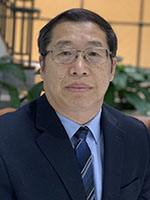Immune Mechanisms in Pathologic Responses to Particles, Nanomaterials, and Nanomedicines
Wednesday April 28, 2021
10:00 am
-
11:30 am
Eastern Time (ET)
View session on the EB Virtual Platform (EB registration required)
DDD
MP
TOX
TCP
Chair :
 Qiang Ma
Qiang Ma
Nat'l Inst. for Occupational Safety & Health, Centers for Disease Control & Prevention
 K. Michael Pollard
K. Michael Pollard
Scripps Research, Dept of Molecular Medicine
Particulates in the micro and nano range, including environmental pollutants, mineral and organic dusts, nanomaterials, nanomedicines, and metabolite crystals, can bio-accumulate in the body and cause a range of pathological conditions. These diseases, which include autoimmune disorders, organ fibrosis, cancer, and allergy, are frequently progressive and refractory to therapy with severe outcomes. Recent research has highlighted critical roles of the immune system in the response to particulates. This symposium will discuss the current understanding of immune mechanisms in disease development caused by particulates, with focus on autoimmunity, mast cell function, innate memory, and the idiosyncratic reaction to infusion of nanomedicines.
Speakers
K. Michael Pollard
- Scripps Research, Dept of Molecular Medicine
Autoimmunity Induced By Particles, Fibers, and Nanomaterials
Susceptibility to autoimmune diseases is dependent on multigenic inheritance, environmental factors, and stochastic events. Although there has been considerable progress in identifying predisposing genetic loci, a significant challenge facing autoimmune disease research is the identification of the specific events that trigger loss of tolerance, autoreactivity and development of autoimmune disease. Numerous studies have indicated that a wide range of extrinsic factors including drugs, chemicals, microbes, and other environmental factors can induce autoimmunity. This review describes a class of environmental factors, namely particles, fibers and nanomaterials, that have been linked to immune perturbations including autoimmunity. Mechanisms of particle, fiber and nanomaterial induction of immune activation are discussed in terms of human and animal model studies with a focus on the role of inflammation and the innate immune response. We argue that localized tissue damage and chronic inflammation elicited by such exposure leads to the release of self-antigens and damage-associated molecular patterns which provide a milieu for the production of autoreactive B and T cells that contribute to the development and persistence of facets of autoimmunity in predisposed individuals.
Jared Brown
- University of Colorado, Skaggs School of Pharmacy
Understanding Mast Cell Activation In The Development at Safe Nanotechnologies
Engineered nanomaterials (ENMs) have unique physicochemical properties with potential to impact diverse aspects of society. While there has been considerable investigation into the properties of ENMs that elicit toxicity, little work has focused on the ability of ENMs to promote or exacerbate allergic disease. Mast cell activation, which is central to development of allergic disease, has been an impediment to a number of pharmaceuticals and will likely represent a challenge for nanomedicines. Dr. Brown will present data demonstrating that certain ENMs elicit mast cell activation leading to adverse pulmonary and cardiovascular outcomes. In addition, this presentation will provide data on the role of ENM physicochemical properties that contribute to mast cell activation. Lastly, the role of genetic factors in mast cell activation by ENMs will be highlighted.
Paola Italiani
- National Research Council (CNR) - Institute of Biochemistry and Cell Biology (IBBC), Italy
Do Nanoparticles Induce Innate Memory in Monocytes/Macrophages?
Human monocytes/macrophages react to potential dangers in different ways depending on their previous history of stimulation. This phenomenon is recognized as innate immune memory and it is non-specific. Engineered nanoparticles (NPs) are novel challenges for our innate immune system, and besides their putative direct inflammation-inducing effects, we hypothesized that NPs may also induce innate memory in human monocytes. Currently preliminary results show the capacity of NPs to prime cells to become more reactive or less responsive to a subsequent bacterial challenge. The possibility of shaping innate memory with NPs could open the way to future novel approaches of preventive and therapeutic immunomodulation.
Seyed Moghimi
- Newcastle University, School of Pharmacy, United Kingdom
Infusion Reactions to Nanomedicines: A Moment of Macrophage Intoxication
Infusion reactions to nanomedicines in human subjects are idiosyncratic and non-IgE-dependent. Increasing evidence in animal models suggest that these reactions are most likely related to robust nanomedicine clearance, and independent of complement activation and opsonisation processes, by a population of responsive macrophages and other immune cells leading to immedite release of arachidonate metabolites and proinflammatory mediators from these cells. In animal models, infusion reactions are avoidable either through dose adjustment or through nanoengineering strategies that delays nanomedicine capture by responsive immune cells. This concepts will be examined and discussed during this presentation.